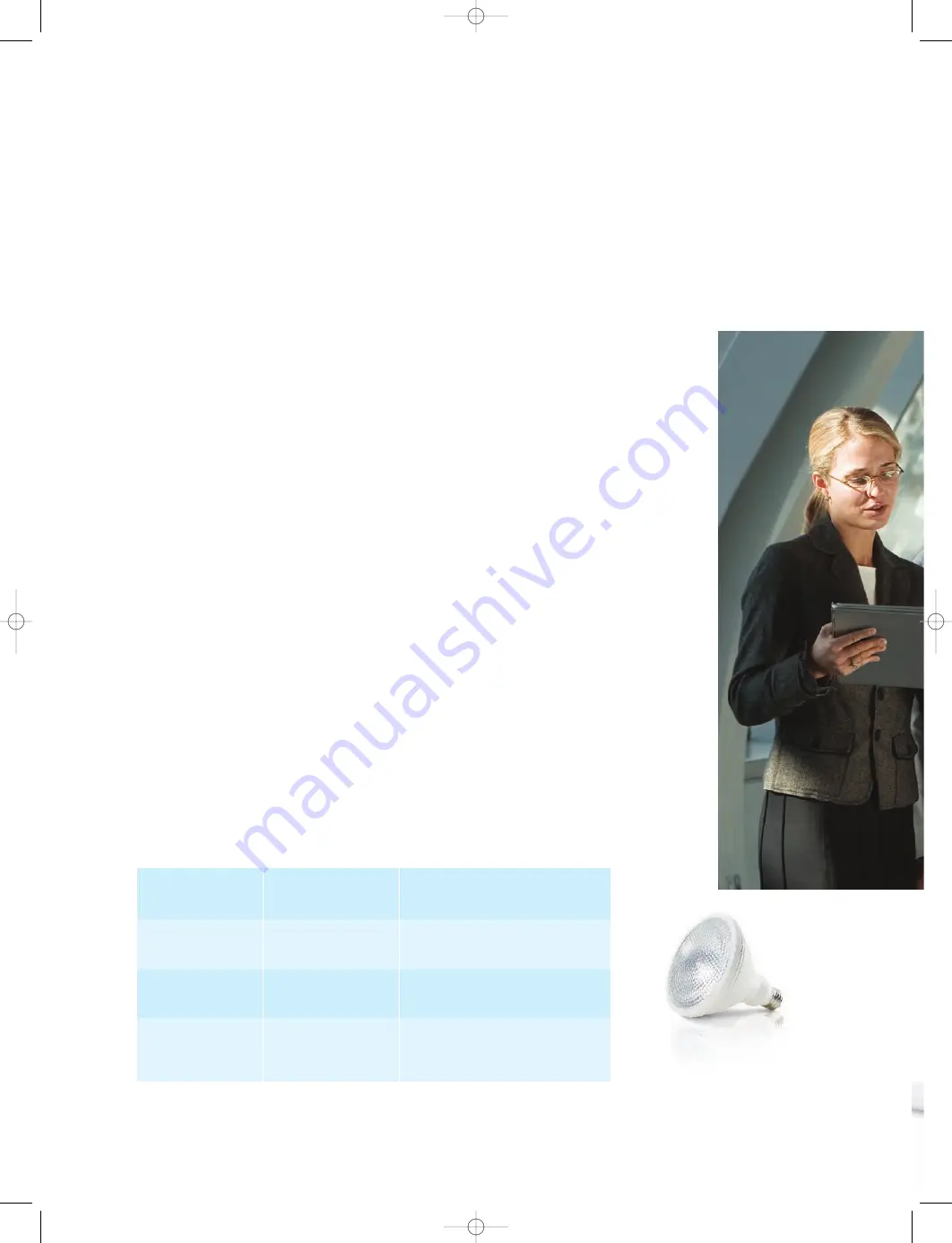
In today’s economy, healthcare facilities need to do everything they can
to protect their bottom lines. Simplification, along with energy-efficient,
long-lasting lighting solutions, means savings.
Because healthcare organizations operate 24–7, even small gains in efficiency
can lead to significant savings. Replacing outdated lighting systems with more
efficient, environmentally-friendly solutions will reduce energy consumption
and maintenance requirements, saving funds for the core mission: healthcare
delivery.Working with fewer lamp types and standardizing wattages can reduce
complexity, making maintenance more manageable and less costly.
Philips has a strong commitment to sustainability and is continuously finding innovative ways to
provide more environmentally sound and energy efficient choices for you.We are convinced that
those facilities that combine the principles of economic growth and environmental stewardship
will be the winners in the future.
To access your potential savings, our team of lighting experts can perform a Lighting Audit to
help you maximize your profits without sacrificing your staff and patients’ experience.
Boosting the bottom line
Controlling operations and
Healthcare T.C.O.O.:The Total Cost of (Lighting) Ownership
Understanding how various lighting choices impact the bottom line is essential.These elements
will affect a property’s payback, cash outlays and return on investment.Taken together, it’s the
total cost of ownership, or T.C.O.O.
Four factors drive the total cost of lighting ownership:
1. Product
The initial purchase cost
for the lighting system.
Beyond first cost, compare performance:
service life, lumen maintenance, and color
rendering and stability.
2. Energy
Annual operating hours
multiplied by electrical cost
(kWh).
Consider product wattages as well as light
output and lamp performance.
3. Maintenance
Includes labor and
relamping costs.
Longer-life lamps that maintain color stability
and lumen output can reduce maintenance.
4. Disposal
The end-of-life cost, including
disposal and recycling of
lamps, ballasts and fixtures.
Another area where longer-life lamps benefit
the healthcare facilities, by reducing waste
and cost.
Philips MasterColor
®
Integrated 25W
PAR38 Ceramic Metal Halide lamps
consume 3 times less energy and last up to 4
times longer than standard 75W PAR38 halogen
lamps.
1
This cuts cost—but not light output.
14
Philips Healthcare Lighting
1) MasterColor CDMi 25W PAR38 offers 12,000 hours rated average life as compared to standard 75W PAR38 halogen with 3000 rated average life.The rated
average life is the life obtained, on average, from large representative groups of lamps in laboratory tests under controlled conditions at 10 or more operating
hours per start. It is based on survival of at least 50% of the lamps and allows for individual lamps or groups of lamps to vary considerably from the average.
Healthcare Brochure 2008_INSIDE.qxd:brochure inside 1/20/09 2:09 PM Page 14






































